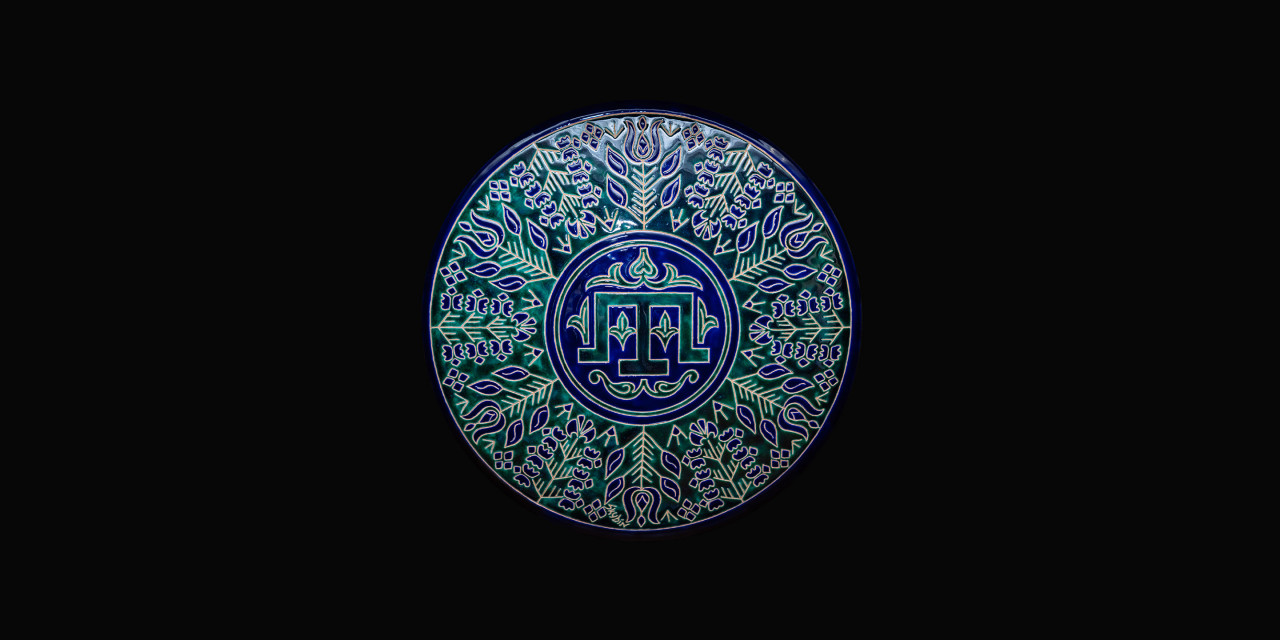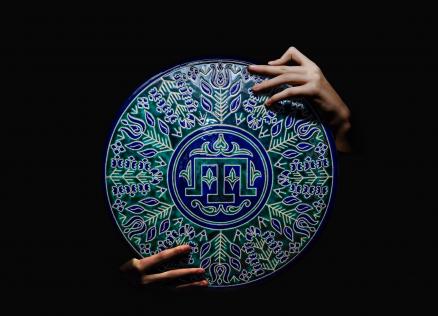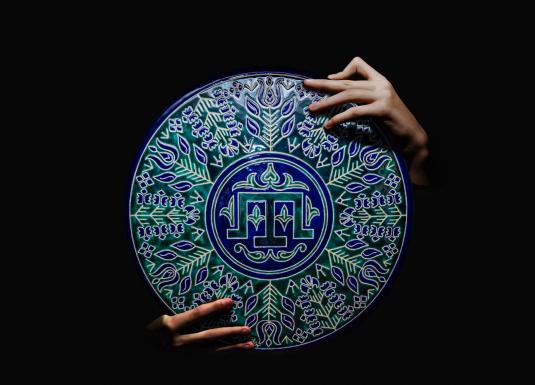Tamga

This ceramic shield is based on an original ceremonial shield of a 17th-century soldier from the collection of the Polish Army Museum. It was decorated with dense floral ornamentation, surrounded by gold thread fringe, copper plates and jewel-encrusted mother-of-pearl medallions. On the surface, fig branches arrange in a circle, entwined with red silk and silver thread. The medallions and plates echoed jewellery forms typical of the Crimean region since the Golden Horde age: triangular filigree, embossed rhombus-shaped belt details and six- or eight-leaf flowers. Two elements recur: carnation and tulip. The latter, the Crimean endemic, is a traditional motif in the decoration of Crimean Tatar soldiers' armour, while the carnation symbolises wisdom. However, dense ornamentation is not typical of Crimean craftsmen's work: traditionally, the ornaments on items produced there have space and openwork. Perhaps this is a style borrowed from European or Eastern craftsmen.
The decoration of the ceramic shield replicates the original dense ornamentation, complemented by a three-pointed tamga, the national symbol of the Giray’s dynasty (15th-18th centuries), to which the Crimean khans belonged. The main colours of the work are green and blue, sacred and blessed in Islam.

